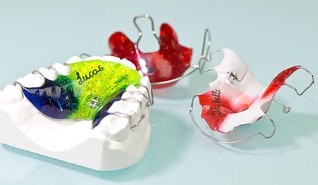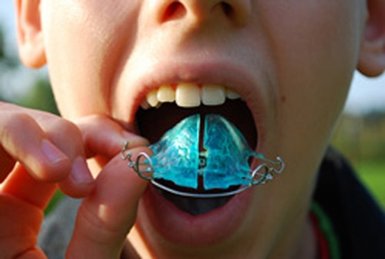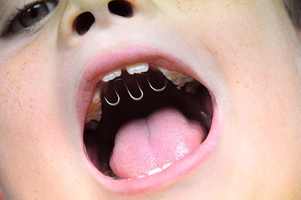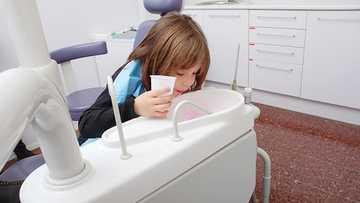 Sometimes, the food you least expect turns out to have surprising cavity fighting benefits. Below are a few that we believe were quite interesting. Cheese Some experts believe that the protein found in cheese known as casein may have protective properties that could help prevent cavities and promote oral health. It has been shown that the calcium levels in the mouth increase after consuming cheese. Our teeth is partly made up of calcium. The calcium present in cheese mixes with saliva to help remineralize teeth and protect the teeth from cavities. Chewing Gum Chewing sugar-free gum has been recommended to prevent cavities. The sugar-free variety made with Xylitol – a natural sugar substitute, tends to be more beneficial. Xylitol is an effective cavity fighter that can prevent decay because cavity-causing bacteria cannot use Xylitol to grow and cannot break it down to create acid. It is highly effective in mint form and must be consumed at least three times a day. Be sure to check the ingredients of the gum and see if it is the first listed ingredient to make sure the amount is enough. Candy We were taught since childhood that the number one enemy of healthy teeth is candy, however, sugar-free candies, similar to sugar-free gums, may hold potential for cavity prevention. Dentists agree that sugar-free candies doesn’t hurt your teeth and if the candy is made with Xylitol, as many hard candies and lollipops now are, then it can actively help fight tooth decay too. Wine Wine, the red variety, may be thought to leave stains on your teeth but one study showed that many of its components can actively fight bacteria that can lead to cavities and decay. However, dental experts point out that laboratory results do not always relate to actual situations. Dental experts argue that it is important to consider how these chemicals interact with the plaque and biofilm covering every tooth. Raisins While raisins are deemed as a cause of cavities, it seems that this dried fruit is similar to wine. Scientists have found that certain flavonoids and polyphenols present in raisins can actively fight bacteria that lead to cavities. Yet again, dental experts remain unconvinced of equating this lab result into real life. Raisins have long been avoided as a snack because of their sticky nature and the high sugar content. In addition, it is still to be considered if the cavity-fighting properties of the polyphenols can outweigh the decay-causing properties of sugar. Use of Straw When it comes to preventing cavity, acidic, sugary beverages are clearly not a smart choice. However, in one study, it was found out that you can lessen the damage to your teeth by sipping soda with a straw, particularly if you do not allow the straw to come close with the teeth. However, experts still warns of drinking sodas in excess. While a straw can help, the best defense is not drinking these beverages in excess.  Previously, we have discussed about retainers for children, the different types of retainers and the reasons for wearing it. Like any orthodontic devices, there are some guidelines on how to wear it as well as the proper way of caring it to prevent damage.  Getting Fitted Your dentist will fit your child for the retainer using a material called alginate. It is a chalky, sticky, thick substance that creates a mold of your teeth and oral cavity when you sink them in. The process of fitting is painless and fast. Alginate comes in different flavors and does not taste bad. The finished retainer can be custom designed to express your likes and style. You can have a picture of your child’s favourite cartoon hero or any design on the plastic part of the retainer. After getting fitted for the retainer, it usually takes less than a week to get it. Wearing a Retainer Wearing a retainer feels unusual and weird at first, but that’s normal. You can see your dentist to adjust it if the retainer causes rubs, pain or cuts against your gums. Initially, you will need to get used to talking with it. Talk slowly at first to practice and later on, you will even notice that you’re wearing it. Dentists suggest reading aloud every day for few minutes. You will notice an increase in saliva flow in the 3 days of wearing your retainer, which is normal. Retainer Care Guide Tips When you are wearing a retainer, plaque, bacteria and leftover food residue sticks to it. Hence, it is important to clean your retainer every day. But be sure to ask your dentist on how to clean your retainer because certain types shouldn’t be cleaned using a toothpaste. You can submerge it in a mouthwash or use a denture-cleaning solution to kill germs and freshen it up. Since the plastic portion of your retainer may crack if it becomes too dry, you needs to always soak it when you’re not using it. Plastic easily melts or warp so never soak it in hot water and place it near a heat source such as on a cooking stove. Also, never bend the wires. Flipping the retainer when inside your mouth might bend the wires. Another important way in taking care of your retainer is to never lose it. Retainers can be quite pricey and you might have to spend for a damaged or lost retainer. Teach your child to always keep it in its container. Teach them to look and check their lunch tray before dumping it. Place it in the same spot when at home when they’re not wearing it.  You have probably seen a kid taking out his retainer before taking his snack, and carefully placed it in a container to ensure it is safe while he eat. You wonder why this small plastic mouthpiece is important to him. Let us find out. What is a Retainer? A retainer is an orthodontic device that is made from metal and plastic and is custom-fitted for each child or adult who needs one. It perfectly fits the mouth and the top of the teeth. Retainers are very common because most people who wore braces need to wear a retainer for a little while after removing their braces. Other people use them to close tooth gaps, help with certain speech problems or to resolve other dental problems. Why Should I Wear a Retainer? There are several reasons for wearing a retainer. The most common is to help maintain the new position of your teeth after wearing braces. It is necessary to wear a retainer because as you grow, your teeth also move and tend to shift to another position. Retainer help ‘retain’ their position and prevent shifting, which happens naturally. Once your braces are taken off, your dentist will fit your for a retainer. There is a certain time and duration of wearing it and the dentist will tell you how long to wear it. Some kids wear their retainer for more than a year. Other children may wear retainers to close a tooth gap or space or simply to move one tooth. In this case, there is no need for braces as retainers can do the job. To close a space, retainers are usually worn for several years. When you wear a retainer, certain teeth feel pressure and could feel sore for the first several days. If you are experiencing discomfort, there is no need to worry as it is completely normal.  Crib or Tongue-Cage Retainer Crib or Tongue-Cage Retainer Retainers can also health a number of mouth problems aside from the moving of teeth. In some cases, they are used to help a medical problem such as tongue thrust – a condition where the tongue sneaks through the teeth when you’re talking. A type of retainer called tongue cage or crib retainer is designed with tiny metal bars that are hanging down from the roof of the mouth. This will keep the tongue from thrusting forward in between the teeth when speaking. In this way, your tongue will get used to position at the roof of the mouth rather than through your teeth. The duration a child wears tongue cage varies depending on the child. Another use of retainer is to alleviate temporomandibular disorder (TMD). This condition is often a result of a bite problem, where the teeth are not positioned properly when the jaws are closed. This is also called malocclusion. Another reason for TMD is bruxism or the habit of grinding the teeth while asleep. Retainers can help by preventing the mouth from closing completely while asleep, to prevent you from grinding your teeth.  It may not be a big deal but putting an apple rather than a sugary snack in your child’s snack box can help improve his dental health and his performance at school. After all, kids consume more than 20 percent of their meals at school. Here at Mint Kids Dentistry, we remind parents to make better decisions when preparing your child’s school lunch. Excessive consumption of sugar can harm your child’s oral and general health. Cookies, chewy fruit snacks and candies interact with bacteria in the plaque. The plaque forms at the surface of your teeth and in between your gums and teeth, generating acid that can erode enamel and cause tooth decay. Although sweets can give short-lived energy on your kids, such sugar rush turns into a crash, leaving kids feeling sleepy and lethargic. This isn’t the kind of mental state children need when preparing for an afternoon class. Mint Kids Dentistry recommends these oral health practices for school.
|
AuthorMint Kids Dentistry Archives
July 2021
Categories |
Location |
|
Sitemap
|
Forms
|

 RSS Feed
RSS Feed